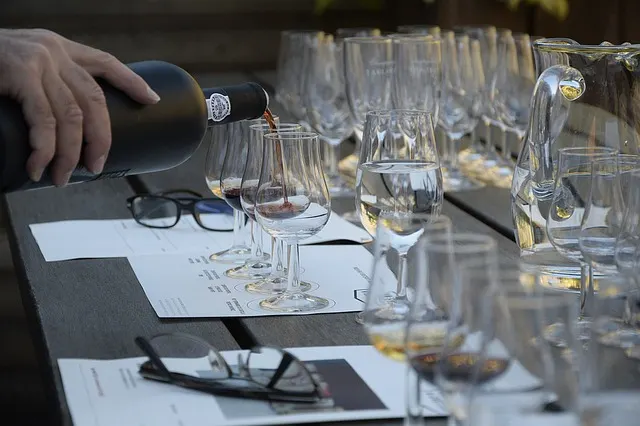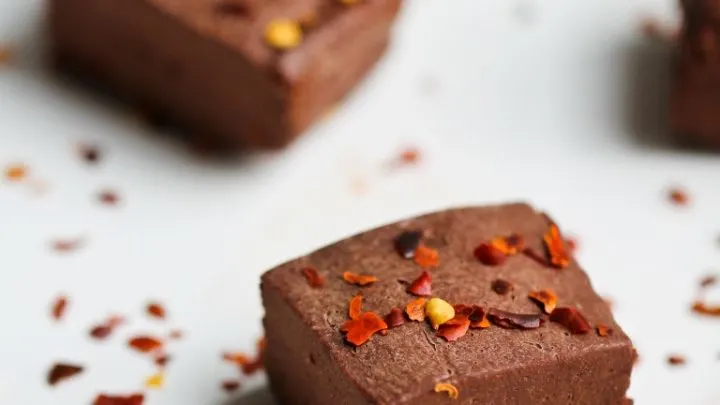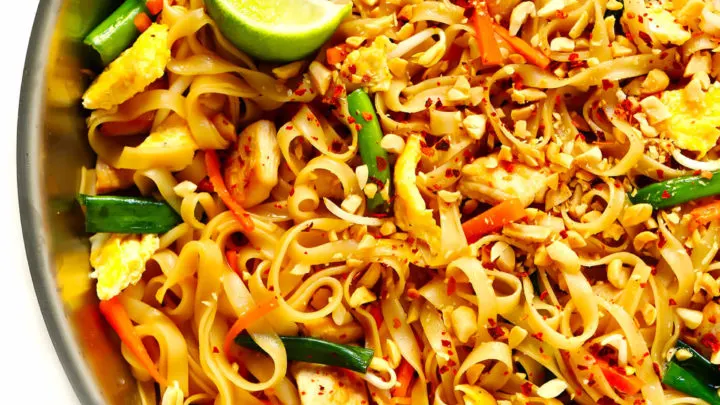Sweet wines are some of my favorite wines to pair with food! They’re so versatile and you can get super creative with food pairings.
If you aren’t a fan of sweet wine, it’s probably because you just haven’t met the right sweet wine yet or had it with food. Or it’s possible Moscato was your first wine-love, but now you’re old and refined, and sweet wine reminds you of a time when you still wore a bra and idolized frat boys named Chad.
Most people don’t like sweet wines because they lack balance. As in, there isn’t a high enough acidity or enough structure to balance out the sugar in the wine.
But hear me out: there’s SO much more to off-dry wines. A nice, balanced off-dry wine can be one of the more unique bottles you’ll ever try and the most fun to pair with food!

Levels of Sweetness in Wine
In my time working with wine, I would often pour a fruity, dry wine for people and get the response “Oh my, it’s just sooo sweet!”
But sweet is VERY different from fruity. Sweet refers to the amount of residual sugar in a wine. What is residual sugar? It’s exactly what it sounds like: the amount of sugar in a wine.
There are four levels of residual sugar that determine a wine’s sweetness: Dry, Off-Dry, Semi-Sweet/Sweet, and Super Sweet.
Dry (Not Sweet)
0 – 10 grams per liter of residual sugar. Dry wines have the lowest amount of residual sugar and can be fruity, but have no detectable sweetness.
Examples of Dry Wines
- Merlot
- Cabernet Sauvignon
- Pinot Noir
- Chardonnay
- Sauvignon Blanc
Off-Dry (Mildly Sweet)
10 – 40 g/l residual sugar. Off-Dry wines are just one step up from dry wines and have a light, mild sweetness. They’re a great place to start if you’re just now dipping your toes into sweet wine territory.
Examples of Off-Dry Wines
- ‘Extra-Dry’ Sparkling Wines
- Reisling
- Demi-Sec Vouvray (or any wine labeled ‘Demi-Sec’)
- Gewurztraminer
- Pinot Gris
- White Zinfandel
- Rosé D’Anjou
- Brachetto d’Acqui
Semi-Sweet/Sweet (Normal Sweet)
40 – 120 g/l residual sugar. Semi-Sweet/Sweet Wines are the “normal”, standard level of sweet, like what you would expect from a Moscato.
Examples of Semi-Sweet/Sweet Wines
- Late harvest whites and some late harvest reds
- Moscato
- Port
- Madeira
- Marsala
- Banyuls
- Lambrusco
Super Sweet (Intensely Sweet)
120 – 220 g/l residual sugar. Super Sweet wines are considered “Intensely Sweet”. These wines have the highest amount of residual sugar and are generally consumed in lower quantities due to the extreme sweetness.
Examples of Super Sweet Wines
- Ice Wine
- Sauternes
- Sherry
- Tokaji
- Tawny Port
- Rutherglen
- Muscat
Keep in mind: these examples are not cut and dry (ha. ha.). For example, Riesling, Lambrusco, Vouvray, and even Moscato can all range from dry to super sweet — it just depends on the bottle. You can always check the residual sugar if it’s included on the label, or ask someone who knows their wine to tell you what to expect.
How to Pair Food with Sweet Wine
As with acidic wines, the rule remains the same: contrast and complement the flavors of the wine with the flavors of the food. Sweet wine is made for SO much more than dessert, so if a wine is sweet, don’t be afraid. Just follow these three rules.
1. Complement Sweet Wine with Spicy Foods
An off-dry Vouvray or Riesling with a spicy Thai curry is ungodly good. The sweetness in the wine has an effect akin to drinking milk when you’re eating a spicy dish (sound gross, but I promise it’s not).
The sweetness cuts through the spice and cools down the heat. If you suffer when you eat spicy foods, this is your solution.
2. Complement Sweet Wine with Sweet Foods
If you’re drinking a Cabernet Sauvignon or any dry red, you better put DOWN that milk chocolate. Those who disagree with me here are wrong.
Dry red wine and chocolate do not go together unless the chocolate is extremely dark and bitter. Why? The sweetness of the chocolate makes dry wine taste even more astringent, and the wine just makes the chocolate taste worse. So if you want to have your cake and drink with it too, you’ll need to choose a wine that matches the sweetness of the food.
For example, try a Sauternes — an off-dry white wine from Bordeaux — with a fruit tart. Or, if you were voted most likely to get scurvy and fruit isn’t your thing, try Port — an off-dry red wine from Portugal — with a chocolate lava cake.
3. Contrast Sweet Wine with Salty Foods
You might be noticing some pairings overlap between this post series, which highlights the biggest rule of thumb of all: wine pairing is flexible. Both acidic wines and off-dry wines can pair well with salty foods.
In the case of the latter, sweeter wines cut through salt, while salt reduces the wine’s sweetness. Have you ever had bacon and chocolate together? Then you understand why this works.
Recipes to Pair with Sweet Wine
Spicy Sausage & Mushroom White Pizza with Lambrusco Rosato (Rosé)
Read Next: How to Pair Tannic Wine With Food
Read Also:


